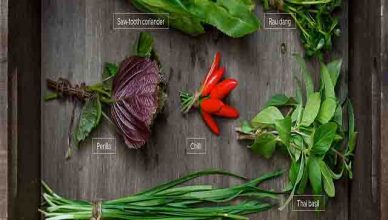Vietnamese Eating Habits: Culture, Meals, and Traditions
Understanding Vietnamese eating habits offers fascinating insights into the country’s lifestyle, traditions, and social values. For travelers, experiencing local food customs not only enhances your culinary journey but also creates a deeper connection with Vietnam’s unique culture. Whether you’re using chopsticks, sharing a meal with locals, or enjoying a bowl of phở on a sidewalk stool, knowing how the Vietnamese eat will enrich your travel experience.
At Hue Food Tour, we believe food is one of the most authentic ways to explore a destination. Here are some essential facts and customs about Vietnamese eating habits that might surprise you – and inspire you to dine like a local.

The Foundation of Vietnamese Cuisine
At the heart of Vietnamese meals is the ancient principle of balance, rooted in Eastern philosophy. Dishes are carefully designed to harmonize yin (cool) and yang (warm) elements – not in temperature, but in energy. For instance, grilled meat (yang) might be paired with cooling herbs and cucumber (yin) to restore internal harmony.
A Traditional Vietnamese Meal Typically Includes:
- Rice or noodles as the staple
- Protein, such as pork, tofu, seafood, or chicken
- Vegetables, often raw or lightly stir-fried
- Soup, especially canh (a light broth with greens or vegetables)
- Dipping sauces, with nước mắm (fermented fish sauce) as the most iconic
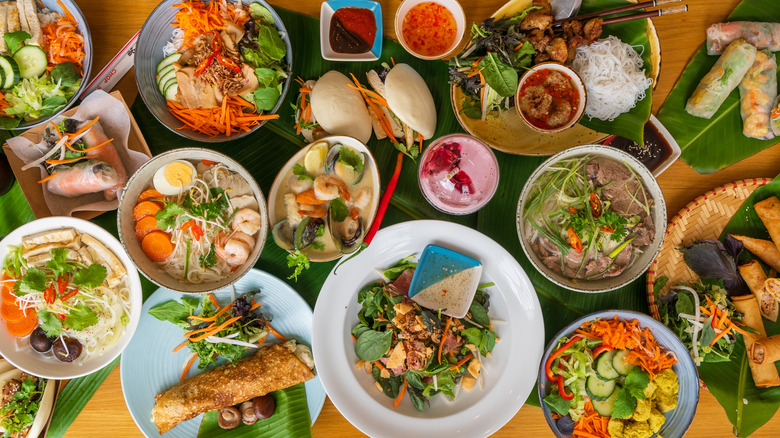
Eating Is a Family and Social Affair
Unlike Western dining styles where everyone has individual plates, Vietnamese meals are shared. Dishes are served family-style, with everyone helping themselves from central bowls or platters. This tradition emphasizes unity, respect for elders, and gratitude.
Families rarely eat in silence or haste. Mealtime is a chance to talk, laugh, and bond. In rural areas especially, eating together is non-negotiable, and lunch may be a leisurely mid-day break for the entire household.
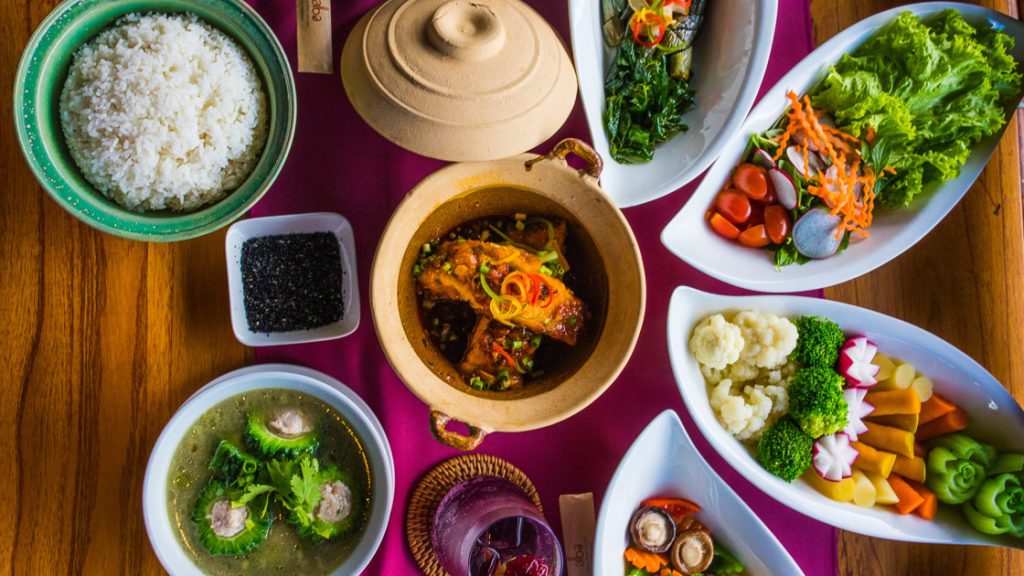
Regional Differences in Vietnamese Eating Habits
Vietnam’s long, narrow geography gives rise to distinct regional food cultures:
- Northern Vietnam: Flavors are light and subtle. Soy sauce is more prevalent, and famous dishes like phở and bún chả originated here.
- Central Vietnam: Spicy, vibrant, and refined. Dishes are small in portion but rich in complexity. Hue – the former imperial capital—is renowned for its royal cuisine, including bánh bèo and bún bò Huế.
- Southern Vietnam: The food is sweet, tropical, and fresh. Coconut milk is used often, and street food stalls serve fruits, seafood, and rice-based dishes with bold flavors.
These differences are essential to understanding Vietnamese food culture in its entirety.
Freshness and Herbs Are Everything
One of the defining traits of Vietnamese cuisine is the abundant use of fresh herbs. Basil, mint, cilantro, lemongrass, and perilla are essential – not as garnish, but as fundamental flavor components.
Meals typically include fresh, crunchy vegetables and raw greens. Instead of relying on heavy sauces or fried techniques, Vietnamese cooks prefer light, clean, and healthy preparations. This reflects a broader cultural value of eating for balance, vitality, and digestion.

Three Main Meals – but No Fixed Schedule
Vietnamese people eat three primary meals a day, but unlike many Western cultures, there are no standardized mealtimes. Timing depends on individual and family routines.
Meal Overview:
- Breakfast (Bữa sáng): Typically before 9:00 AM. Common options include:
- Phở (beef or chicken noodle soup)
- Bánh mì (crispy Vietnamese baguette with various fillings)
- Xôi (sticky rice topped with mung beans, pork floss, or fried shallots)
- Lunch (Bữa trưa): Usually before 1:00 PM. A balanced meal with rice, vegetables, a main protein, and soup. Many office workers eat at local eateries or street food stalls.
- Dinner (Bữa tối): Between 6:00 PM and 8:00 PM, this is the main meal and a time for the entire family to reconnect. Traditionally prepared by women, though modern families increasingly eat out or order food delivery.
📌 Note: Vietnamese culture typically does not include tea time, coffee breaks, or snacking between meals. When snacks are eaten, they are usually seasonal fruits or savory street treats.
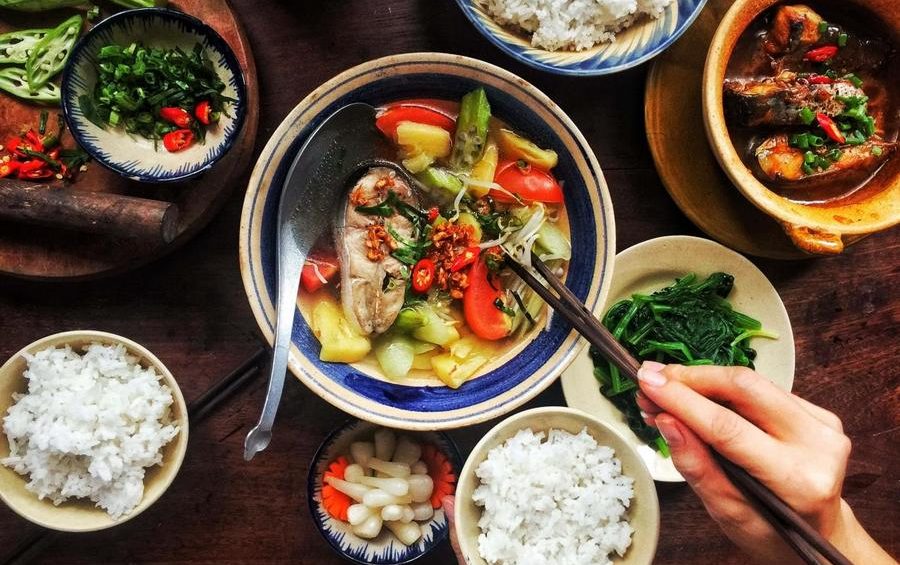
What Is Considered a “Dining Table” in Vietnam?
Especially in rural or mountainous regions, don’t expect a Western-style dining table. Only wealthier households traditionally had separate dining rooms with formal seating.
Common alternatives include:
- A bamboo mat on the floor
- A low wooden or stone table
- A bamboo bed or workbench used temporarily as a surface for meals
This flexible, communal style reflects Vietnamese ingenuity and togetherness.
Sharing Over Portioning
Vietnamese meals are designed for sharing. Plates are placed centrally, and everyone uses chopsticks to help themselves.
- Elders often serve younger members as a gesture of care.
- Youth, in turn, offer the best pieces to elders in respect.
- Dipping sauces, soups, and rice are all communal.
This contrasts with Western dining etiquette, but it fosters a strong sense of community, humility, and appreciation.

Common Cooking Methods: Simple, Healthy, Delicious
Vietnamese cooking emphasizes simple techniques that preserve natural flavor:
- Stewing: For comfort foods like thịt kho tàu (caramelized pork belly)
- Steaming: Often used for chicken and vegetables
- Frying: Especially for fish, which is usually crispy and lightly seasoned
- Boiling or stir-frying vegetables: Typically with garlic and a splash of fish sauce
Rice is always present at dinner, paired with a soup, a protein dish, and at least one vegetable plate.
Relaxed Table Manners – but Always Respectful
There are no strict eating rituals in Vietnam, but manners still matter:
✅ Wait for the eldest to begin eating
❌ Never stick chopsticks upright in rice – it resembles a funeral offering
✅ Chew quietly and avoid wasting food
Mealtimes are social, with conversations about work, weather, or current events. In many households, the TV is on during dinner, and the atmosphere is lively yet respectful.
Street Food: Vietnam’s True Dining Culture
Eating on the street is not just common – it’s cultural. From early morning to late at night, the streets come alive with food stalls serving hủ tiếu, bún riêu, grilled skewers, and desserts.
Key street food facts:
- Locals sit on tiny plastic stools, often on the sidewalk
- Cleanliness is upheld by reputation—vendors live or die by their regulars
- Food is made fresh to order, fast, and often incredibly affordable
🍜 Want to experience this authentically? Join our Hue Motorbike Food Tour or Hue Walking Food Tour to taste hidden gems, meet local vendors, and learn the stories behind each dish.
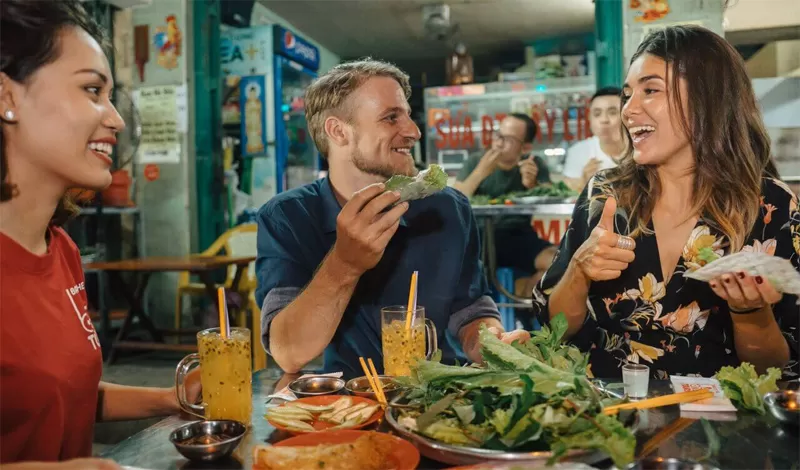
Changing Habits in Modern Vietnam
Urbanization and busy lifestyles are shifting how people eat:
- Solo dining is increasing
- Food delivery apps are booming
- Snacks, bubble tea, and fast food are more popular
- Cafés are now a go-to for work and relaxation
Despite modernization, traditional values remain strong, especially during festivals like Tết (Lunar New Year), when families prepare elaborate home-cooked feasts and pay tribute to ancestors.
And through it all, nước mắm remains the soul of Vietnamese cuisine.
Final Thoughts
Vietnamese eating habits are a true reflection of the country’s core values: balance, family, simplicity, and respect. From steaming bowls of phở to shared meals on bamboo mats, every bite tells a story of culture, resilience, and community spirit.
If you’re traveling in Vietnam and want to connect deeply with local life, we warmly invite you to join the Hue Street Food Tour by Hue Food Tour. With over 15 years of experience, we’re proud to offer authentic, immersive culinary experiences that go beyond just tasting food.
We’re highly rated on TripAdvisor, Viator, Cruise Critic, Private Guides, and other trusted travel platforms – thanks to the heartfelt reviews from thousands of happy travelers.
🍜 Taste authentic flavors, meet friendly locals, and experience Vietnam – one bite at a time. Let us show you the real Hue, through the food that locals love.

David Nguyen – Hue Food Expert
David Nguyen is a respected Hue food expert and experienced local guide with over 15 years of exploring Vietnam’s culinary traditions. With a deep passion for Hue cuisine, he leads food tours that offer more than just great meals – they provide cultural insight, authentic experiences, and memorable connections with local people. David’s tours are highly rated by travelers on TripAdvisor, Viator, and other top platforms. Whether you’re tasting royal-era dishes or street food favorites, David ensures each tour is flavorful, informative, and unforgettable. Join him to discover the true heart of Hue through its food and heritage.




